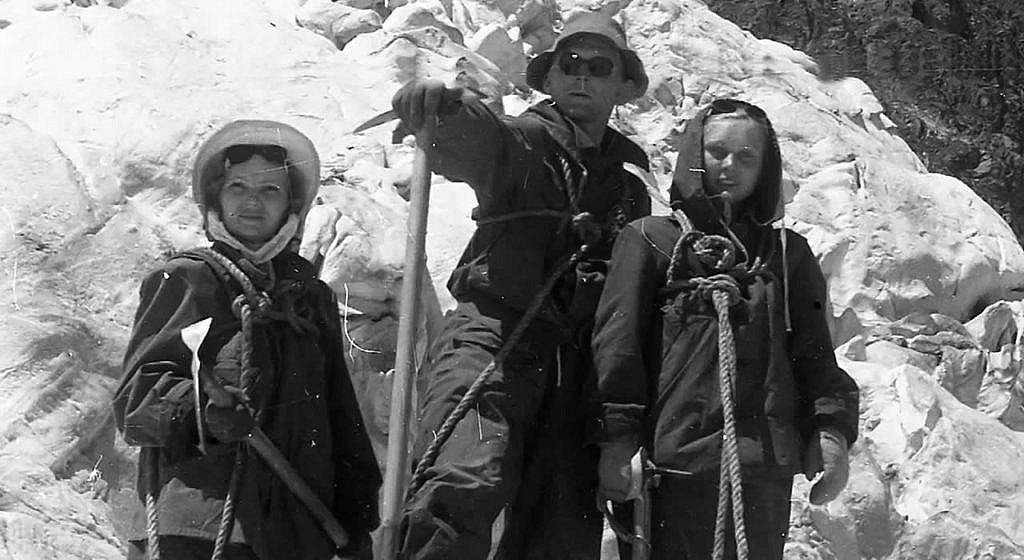
In 1975, a group of tourists of 53 people set off along route No. 30 ‘Tourist base ‘Gornaya’ – Fisht Pass – Dagomys’. As a result of a combination of circumstances, 21 people from the group died along the route. This is the biggest tragedy of Soviet tourism.
Route No. 30
Since Soviet people could not freely travel to the Maldives or Bali, tourist routes within the country were popular in the USSR.
One of these routes was the All-Union Tourist Route No. 30, passing through the picturesque places of the North Caucasus.
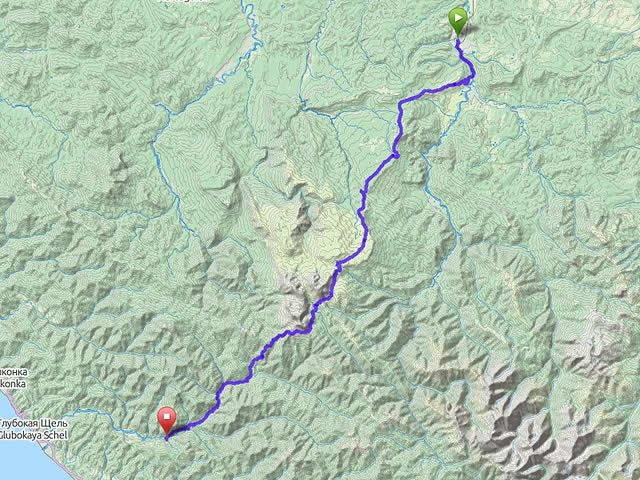
The route did not require special preparation; anyone could participate in the hike.
Route No. 30 has been known since the 30s of the 20th century. The route started from the Gornaya tourist center in Adygea and ended in the city of Dagomys with access to the Black Sea. The length of the route was 65 km with an elevation from 500 to 2000 m above sea level.
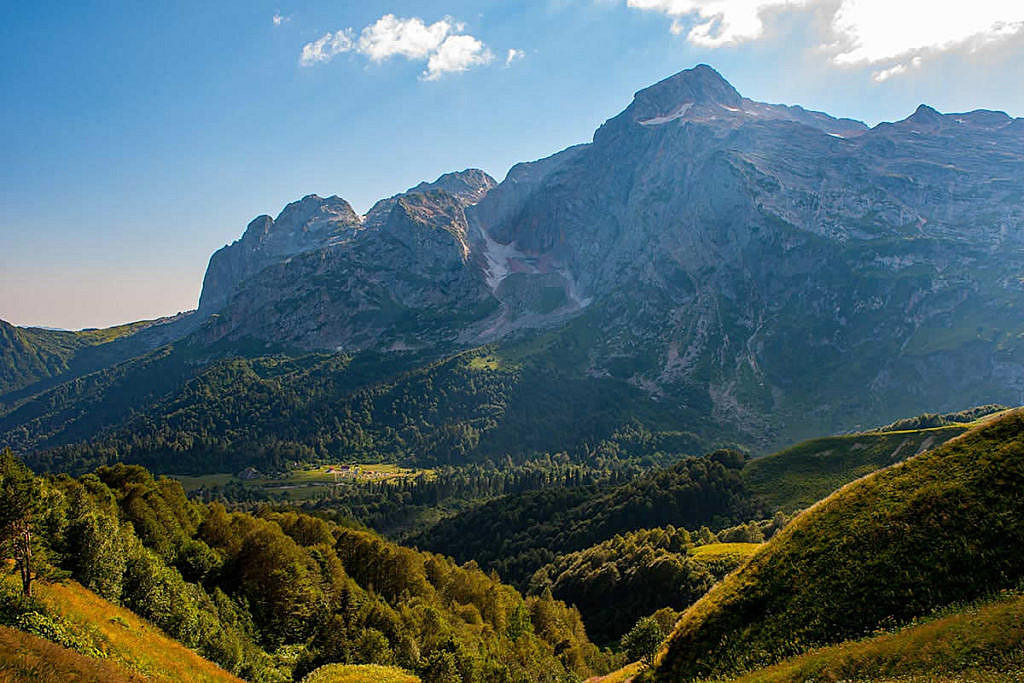
What is planned tourism in the USSR?
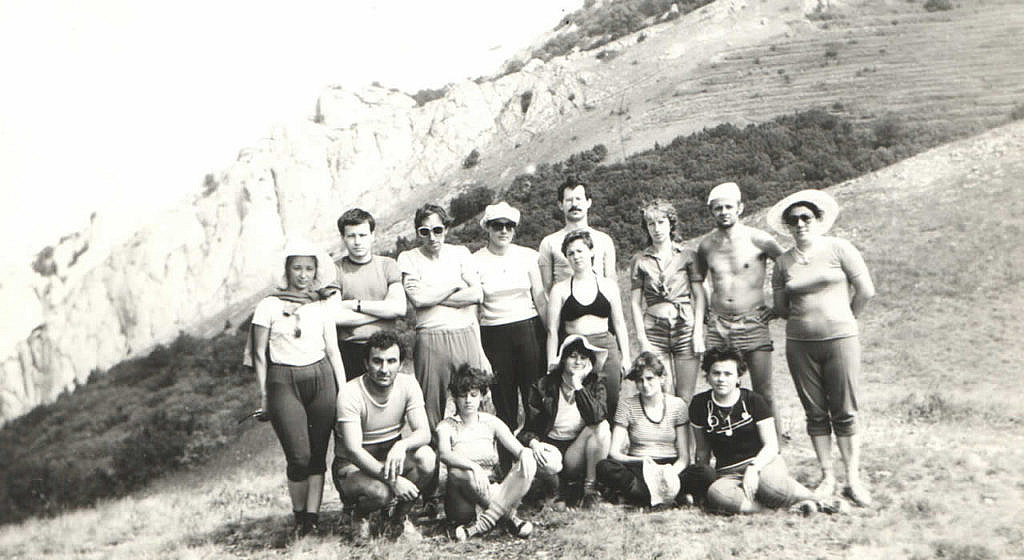
When the state realized that it was impossible to control people walking freely in the forests and mountains, the USSR government issued a number of decrees prescribing the creation of tourist centers and tourist structures.
For a symbolic fee of 20-30 rubles ($15-20 at the exchange rate of those years), citizens could enjoy the most beautiful scenery and join the sport. True, initiation into sports as part of planned tourism groups usually looked like a big drinking party in nature with elements of a picnic in the fresh air.
Completely random people, unprepared for difficulties, ended up in planned tourism groups, which led to various excesses.
Group 93
In September 1975, 51 people signed up for the group traveling along route No. 30. For a tourist group this is a huge number of participants. Any psychologist will tell you that if there are more than 3 people in a group, then they are divided into smaller groups of 2-3 people.
51 people are an almost uncontrollable crowd that requires iron discipline.
The instructor of group 93 was initially Alexey Ageev, a school teacher who worked part-time at a camp site in the summer.
Ageev made a training trip for the group for 1 day to the Rufabgo waterfall.
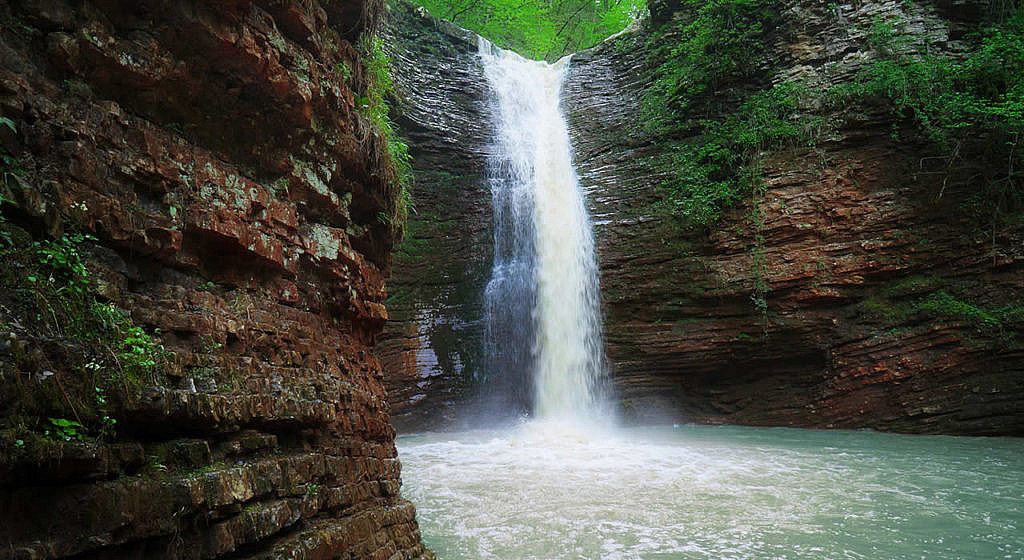
The group was divided into 3 subgroups. ‘Group 0’ – those tourists who went hiking for the first time, subgroup ‘A’ – tourists with little experience and group ‘B’, formed from people who took part in mountain expeditions.
However, Ageev had to leave and two subgroups were formed from three. One of them was led by Olga Kovaleva, and the second by Alexey Safonov – both young instructors and students.
This played a key role in the development of tragic events.
Hurricane
On the morning of September 9, Group 93 set out on the route. Tourists had to overcome a section with a smooth climb and reach the forest border to the Partizanskaya Polyana shelter.
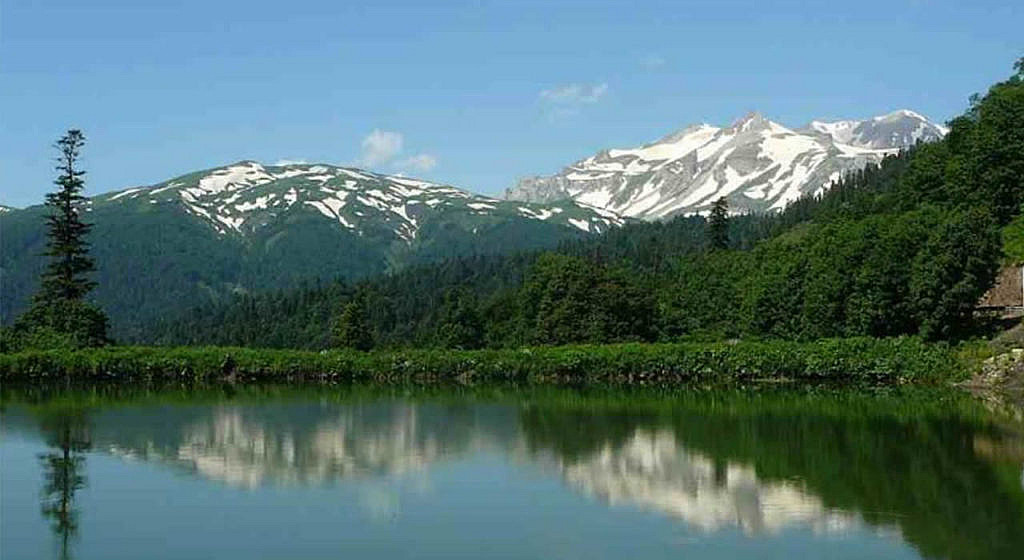
Due to yesterday’s drinking party organized by tourists at the Teplyakov shelter, the group left 3 hours late and only in the late afternoon reached the shepherds’ camps and the Partizanskaya Polyana shelter.
The tourists went to bed after midnight, having gathered around the fire with a guitar and alcohol.
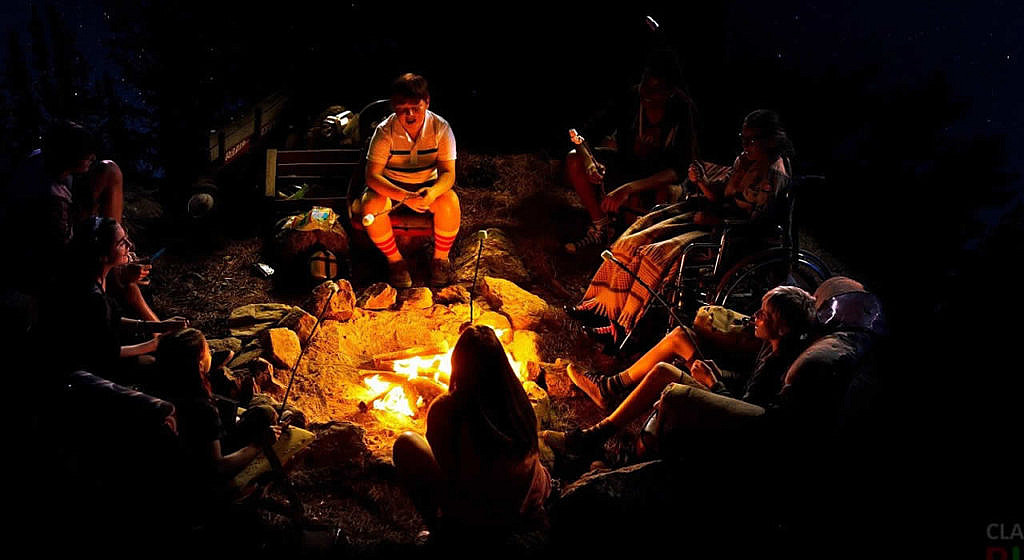
Discipline in the group left much to be desired, but the instructors turned a blind eye to inappropriate behavior.
In the morning there was a difficult section with a steep climb and above the forest line.
At 8 am on September 10, sleepy tourists moved further along the route. Some suffered from hangovers.
The weather was good, but after a couple of hours the sky became cloudy. It began to rain and snow. The weather was deteriorating, but the group moved forward. Some tourists threw away food to lighten the weight of their backpack; hiking in the mountains with a hangover made itself felt.
At an altitude of 1700 meters the weather completely deteriorated. A gusty wind arose with rain and snow. Visibility is practically zero. Safonov’s group caught up with Kovaleva’s group.
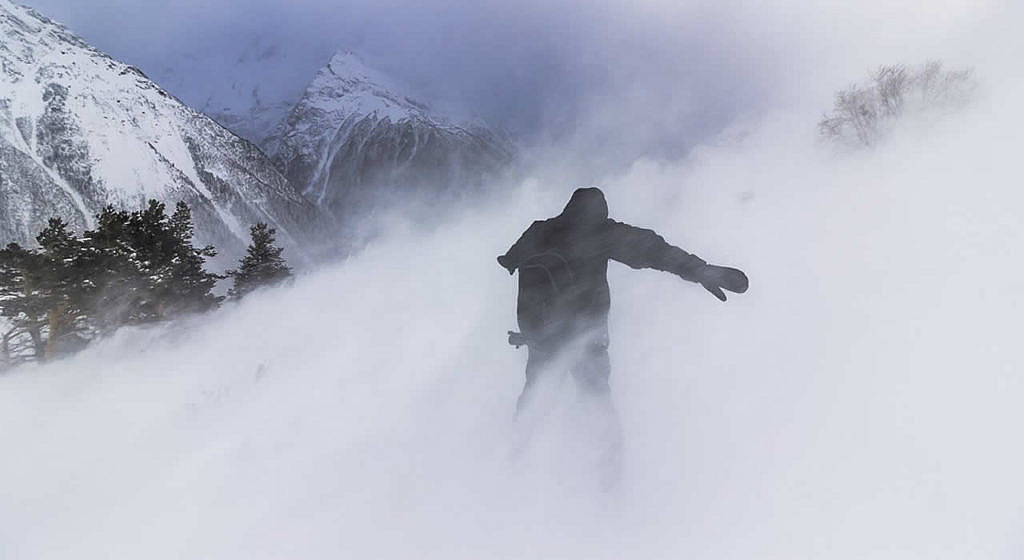
Safonov and Kovaleva stopped and began to discuss what to do next. This was their next mistake.
The instructors discussed the next steps in front of the entire group. Taking into account the fact that many tourists were much older than the instructors, Safonov and Kovaleva completely lost their authority.
The informal leaders of the group suggested going down the slope to the edge of the forest, while Safonov suggested returning along the path to the shelter.
From the testimony of Group 93 member Lyudmila Kosyakova:
Everything happened suddenly… Light rain did not foretell a storm, even when it turned into sleet. Suddenly a wind rose up with such strength that it was impossible to stay on your feet… A few minutes later, one of our tourists, Felix Shinov, was blown away like a feather. We saw how he flew across the plain with great speed and was carried into the abyss. He didn’t even have time to shout… Soon, because of the clouds, wind and snow, it was impossible to see anything even two steps away from us… We were gripped by panic and fear.
From the testimony of instructor Alexey Safonov:
About eight kilometers out of the sixteen that had to be covered that day, after the rain, a hurricane wind suddenly came. Completely black clouds did not crawl, but flew straight towards us. We found ourselves on flat, bare ground; there was nowhere to hide. I grew up in the mountains, went with my father to Elbrus, but never saw anything like this.
From the memoirs of an instructor who at the same time was leading another group in the same area along the Lago-Naki plateau:
The rain turned into large ice pellets with a very cutting face. The pain made it impossible to follow and observe the progress of their movement. We stopped and took out prepared plastic bags and branded bandages to cover our faces. It became very cold, rain jackets and backpacks instantly opened up into an icy crust. The ice pellets rushing at high speed were replaced by snow.
The freshly fallen snow was already above the knee. The rain jackets, soaked in the rain, froze into an icy shell. The wind piercing the body blew out all the heat. In this whirlpool of snow, all landmarks disappeared. Only snow, a flat field and a hurricane wind. This was the Abadzeshsky pass.
Having climbed the Oshtenovsky pass, in the pitch-black swirl of snow, we came across a pack of wolves tearing apart a frozen cow. Well-fed, with bloody muzzles, the predators did not even doubt.
Raising their heads from their prey, they carefully examined the icy tourists, without moving from their place. Behind the wall of Oshten, the gusts of wind weakened a little. Breaks in the continuous flow began to appear, insignificantly with the very slow speed of the snow. Only its depth still maintained the pace of movement, perceiving the force.
The forest was located 300 meters down the slope, in a gorge with the ominous name ‘Mogilnaya’*. The descent to the forest became the third fatal mistake.
*”Mogilnaya” from the word “mogila” – grave.
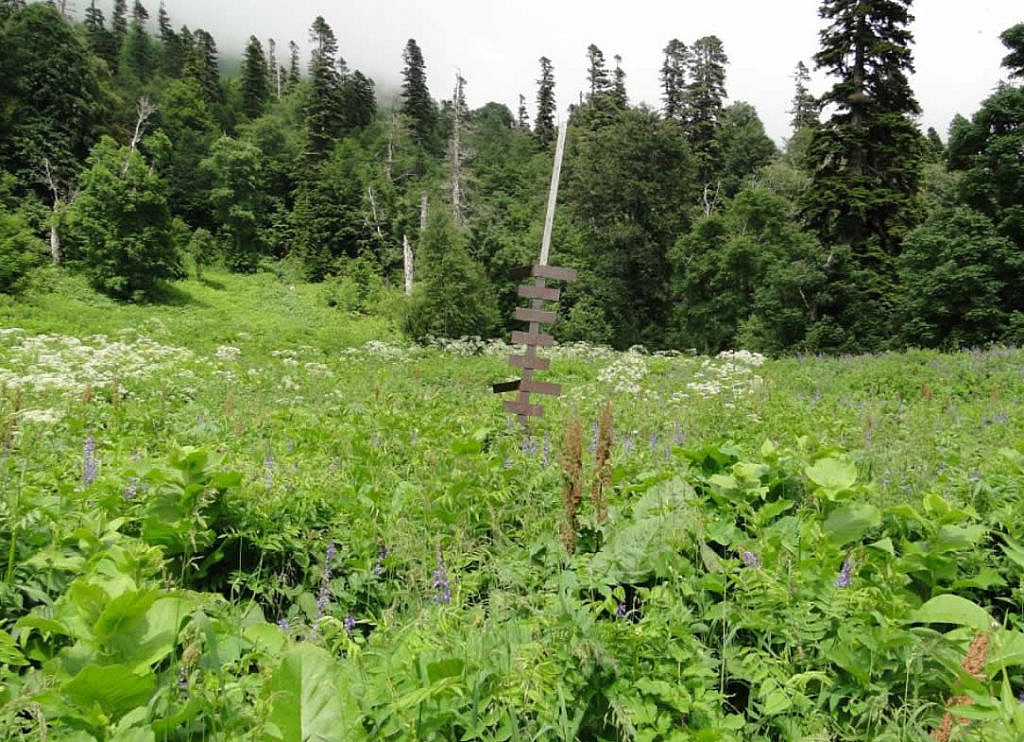
The tourists were descending a steep rocky slope, covered with snow and overgrown with dense bushes.
Suddenly, group member Semyon Duzhansky fell into the abyss, but miraculously caught on to a tiny rock ledge.
His friend Nikolai Zagoryansky tried to come to the rescue, but without a rope Duzhansky could not be saved.
It was decided to continue the descent and return for Duzhansky later.
However, another obstacle awaited the group ahead. The Mogilny stream overflowed, the stormy waters carried branches and fragments of trees.
Nevertheless, the tourists were able to cross the stream. Alexey Safonov discovered that about 20 people came to the forest border, and the rest were lost in the hurricane.
Instructor Olga Kovaleva injured her eyes due to snow and could no longer help Safonov, but still led the tourists to the shepherd’s hut.
Along the way, one of the tourists, Dina Naimon, was completely exhausted. Nearby were three men Mikhail Rashkin, Valery Sokolov and Vladimir Tretyakov.
The girl begged not to leave her. The men said they would come back for her. However, as soon as they got to the shepherd’s hut they immediately went to bed.
Dina died for another day, begging for help, but her cries were drowned out by the wind.
Safonov went in search of the stragglers, but found only three people.
Evening was approaching, the snowstorm did not subside.
Safonov’s group lit a fire and settled down for the night. The men warmed themselves by the fire and ate stew. People on the slope begged for help, but the men were not embarrassed. Soon the fire went out. Alexey Safonov unsuccessfully tried to force tourists to go for firewood, he was ignored.
From the testimony of Alexey Safonov:
Alik Staroselsky pushed the girls away from the dying fire, they fell, and Staroselsky began to warm his hands over the flame. Vitaly Galushko went to get firewood. He brought some wood and the fire flared up again.
At this time, four tourists who were unable to cross the stream, exhausted, settled down under a plastic film, huddled closely together. They froze to death.
Next morning
In the morning, Alexey Safonov and 5 other people went in search of the shepherds’ hut, which was 200 meters from the trail. Despite the fact that everything around was covered with snow, Safonov found a hut.

To his great surprise, there were shepherds Viktor Ostretsov, Vladimir Krainy and some tourists from Kovaleva’s group in the hut.
Exhausted tourists fell by the burning fireplace, and Viktor Ostretsov went in search of other participants.
The task was complicated by the fact that Safonov could not clearly explain to Ostretsov where he left the group.
Luckily, the shepherd had a dog, which led him to the place where the tourists spent the night.
They stood by the extinguished fire and hoped for a miracle. Viktor Ostretsov, falling through the snow almost waist-deep, led the group towards the hut.
The stronger participants rushed forward after the dog, abandoning those lagging behind. Ostretsov demanded that help be provided to the weaker, but no one listened to him.
At this time, the blind Olga Kovaleva and some other members of the group were in the shepherd’s hut.
Ostretsov brought two girls who were lagging behind and forced the guys to go outside after the third girl, who had lost consciousness.
They left the warm hut, tramped around a little and returned back, saying that the tracks had been covered up and they had found no one.
However, the girl who lagged behind, Svetlana Vertikush, survived. She made a shelter out of branches and was constantly moving. Rescuers found her 3 days later.
Mikhail Osipenko decided to go get his backpack with warm clothes. He didn’t return. After 8 days, his body was caught by rescuers from the Armyanka River.
Rescuers would later find strange things indicating that Group 93 had discipline problems.
From the memoirs of a rescuer:
We found a dead guy with a guitar on the trail. He lay face down and smiled. An empty vodka bottle lay nearby.
Some members of the group drank alcohol to keep warm. They all died.
The main thing that distinguishes amateur tourism from planned tourism is the absence of random people in the group.
Tourists in amateur groups have a completely different motivation; these people rely only on their own strength. Therefore, people with low moral qualities are eliminated at the stage of group formation.
In the tourist environment, there is an unwritten rule regarding the group leader:
Point 1: the leader is always right
Point 2: if the leader is wrong, see Point 1.
In amateur tourist groups, decisions are made collectively, but the final word always remains with the group leader.
In amateur groups, no one challenges the authority of the leader. It is the leader who bears responsibility, including criminal liability, in the event of the death or injury of one of the group members.
Soon a group of people appeared at the shepherd’s hut. These were tourists from the next group 94 with instructors.
Shepherd Vladimir Krainy assisted Alexei Safonov, who had suffered frostbite:
– Is there vodka? – he asked the new arrivals.
They answered him with a laugh that they don’t drink vodka in the morning. Vladimir said that he needed vodka to rub Alexei Safonov’s limbs.
They gave him a bottle of vodka. This limited the help of group 94, which, after trampling in front of the hut, went back down to the ‘Armenian’ shelter.
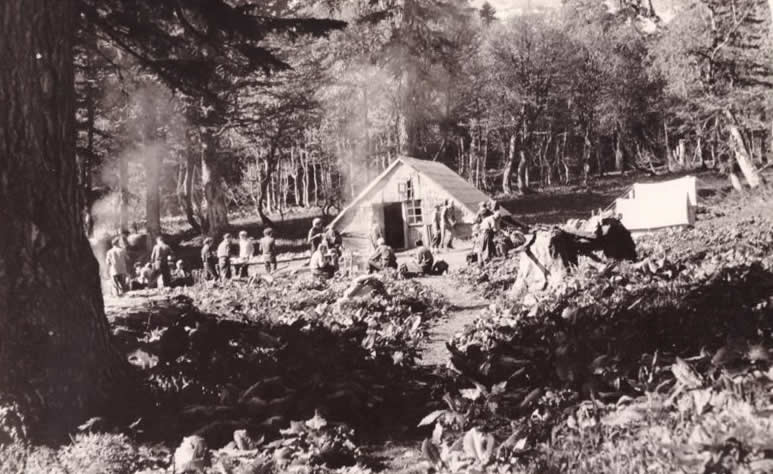
However, not everyone did this. The only person who helped group 93 was a girl.
Instructor Galina Kuzminkina stayed with group 93 and helped the participants. She had personal reasons; her boyfriend was Alexei Safonov.
Kuzminkina and Krainy assisted Safonov and went to look for other survivors. And they found them.
The Magnificent Seven
Seven people were warming themselves by the fire next to the Mogilny stream. Two women and five men. They abandoned their freezing comrades on the slope in order to survive themselves. They succeeded.
Among them was Nikolai Zagoryansky, who promised Semyon Duzhansky, who had fallen off the cliff, to return for him and throw him a rope.
From Zagoryansky’s testimony in court:
Question. Why did you leave the group without permission?
Answer. I’m like everyone else… I see six others leaving, and I’m with them.
Question. But you promised to pull your fallen friend out of the abyss. Why didn’t you do this?
Answer. Duzhansky had already died by that time.
Question. Did you know this for sure?
Answer. Assumed.
Question. Did this happen on the afternoon of September 10?
Answer. Yes.
Conclusion of the forensic medical examination:
Duzhansky Semyon Semenovich, born in 1940 […] died of hypothermia. Death occurred no earlier than September 11.
Another member of the “Magnificent Seven,” Viktor Svezhentsev, had a good “emergency supply”: food, clothing, paper and matches securely protected from moisture. And even a small map suitable for orientation.
From the testimony of Viktor Svezhentsev:
We should not pay for the frivolity of instructors. I was sure that there was nowhere to wait for help, and I relied only on myself. The most basic factor that led to the disaster was the lack of will to live among most people. Those who wanted to survive survived.
From the testimony of another member of the ‘magnificent seven’, Trofim Zotov:
The descent to the bottom of the gorge took almost an hour and a half and was very difficult. Several times I had to stop to take a break and look around. The snow on the trees, bushes, and grass created a very beautiful landscape. The greenery in the snow looked very beautiful.
Other members of the ‘Magnificent Seven’ avoided testifying in every possible way. Some pretended to be sick, others ignored calls from the prosecutor’s office.
A priori, the one who survived will tell his story, but you cannot ask the dead.
Control period. Motivation. No one came to help
Group 93 was supposed to reach the Fisht pass by 16:00 on September 10, but did not leave. There was enough time to overcome the pass; in the entire history of route No. 30, only one group reached the pass by 13.00, all other groups arrived much earlier.
At this time, there were instructors of group 92 at the Fisht shelter, but none of them worried about the fact that the next group did not reach the deadline.
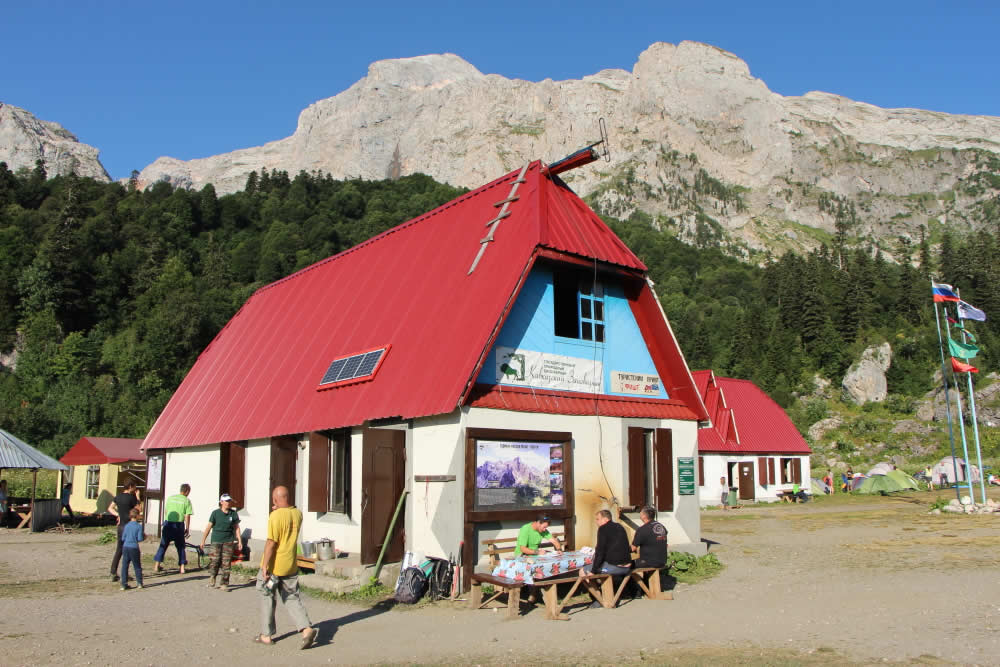
From the testimony of Gennady Belyaev, instructor of group 92:
I was an instructor of the 92nd group. We arrived at Fisht the day before and had to wait for group 93. The group did not arrive on time, and we were convinced that the tourists had taken refuge at the ‘Armenian’ shelter.
Question. Did you consider that they might be in trouble and need help?
Answer. In principle, this was not excluded.
Question. Why didn’t you go look for them?
Answer. Nobody invited me.
Question. Who should have invited you?
Answer. Don’t know.
Expert opinion of masters of sports in tourism Y. Stürmer, B. Gelfgat and Y. Alexandrov:
The instructors of group No. 92, who were located at the Fisht shelter, had a real opportunity to report to the control and rescue squad of the region about the violation of the deadline by group No. 93. To do this, they needed to send a task force to Babuk-Aul, no later than 16.30-17.00 on September 10, 1975, where there is an operating radio station of the Caucasian State Reserve.
It was also necessary to send a mobile group to the Caucasus camp site through the Armenian Pass and the Partizanskaya Glade. The reality of such a step is confirmed by the passage of this route on September 10 (from Partizanskaya Polyana to Fisht) and September 11 (in the opposite direction) by instructor Gasilov alone under the same weather conditions in which group No. 93 found itself.
Instructor Gasilov did not lead the group and was at the Caucasus camp site. He was in ‘temporary downtime’, but actually earned money by photographing tourists.
To give the photographs to the members of group 93, Gasilov went alone to the Fisht pass, but on a different road. The path was longer, but bypassed the alpine section where group 93 was stuck.
On September 10, having covered 27 kilometers, Gasilov went to the Fisht shelter and did not find Group 93 there. After waiting for the group all night and the next morning, Gasilov returned to the Caucasus base along the same route.
Gasilov’s motivation is clear – the desire to get money for the photo. At the same time, the motivation of other instructors at the Fisht base is understandable – they had no particular desire to leave their warm, cozy houses in a snowstorm.
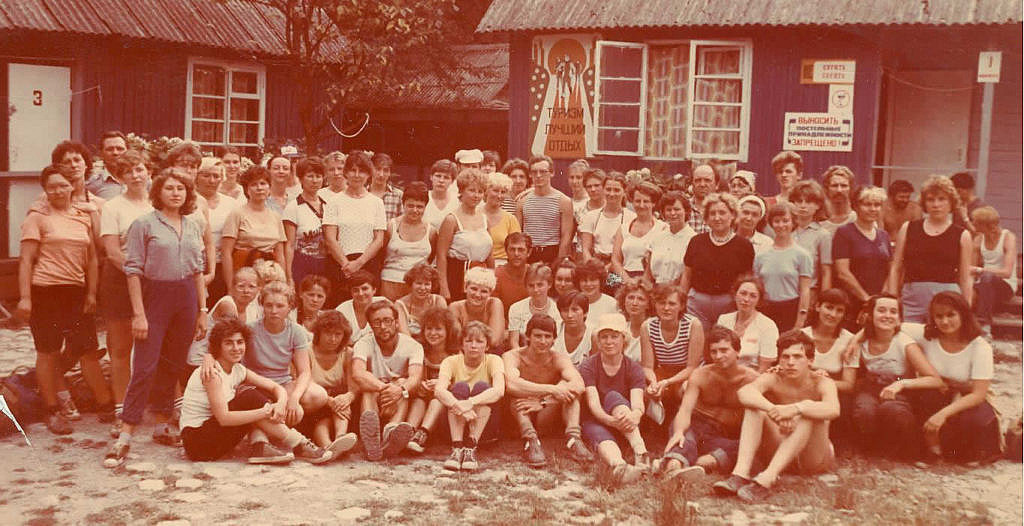
However, it was Gasilov who informed the director of the Caucasus tourist center Krikor Zeytunyan about the missing 93rd group.
Zeytulyan was in no hurry to report the incident to rescuers. Instead, he sent instructors Deev and Rosinov to ‘check the route’ to the Armenian shelter.
The instructors did not find group 93 in Armenian, but found group 94 there.
Instructor Lyudmila Taranukhina informed them that part of group 93 was in the shepherd’s field, among them there were wounded and dead. Deev and Rosinov returned to the Kavkaz base to report what had happened.
And the snow kept falling and falling, Group 93 froze in the mountains.
Rescue work
It is worth noting that rescue work in the USSR since 1975 was, to put it mildly, not up to par. Typically, the regional rescue team consisted of 3-4 rescuers, and volunteers – experienced climbers, tourists, speleologists – were involved as additional human resources.
On September 12, volunteer rescuers arrived in the mountains, on foot and on horseback. About 200 people took part in the rescue efforts. The task of rescuing people was complicated by the incessant snowfall.
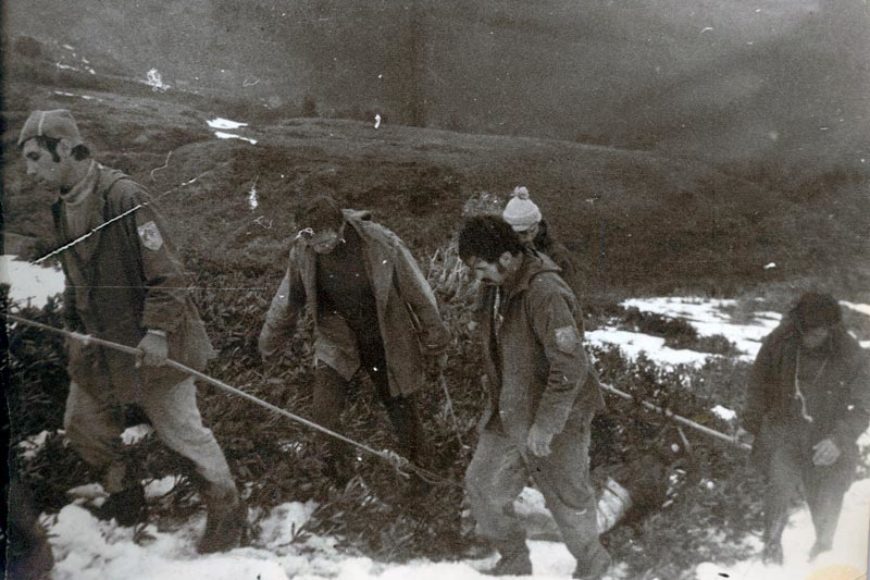
On September 13, in conditions of almost zero visibility, two helicopters made their way from Adler through the snowstorm and fog, and the pilots bravely landed their machines on a tiny spot near Mount Guzeripl, but by that time there was no one to save.
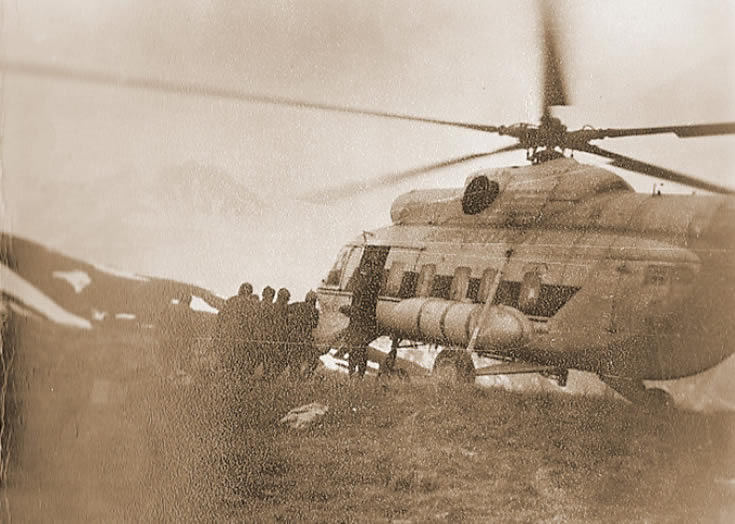
Four rescuers took the surviving members of Group 93 from the shepherd’s hut to the Armenian shelter, where they received medical assistance. Some of them were taken to hospitals in Sochi and Adler. Some of the tourists fled without waiting for the investigation to end.
Rescue work was carried out for 10 days, until the body of the last tourist was found.
Conclusions of the route commission:
The section of the route on which the group died was put into operation only in 1975 by the director of the Caucasus tourist center, so this section was not prepared for the passage of planned tourist groups. There were no appropriate altitude markings installed there and emergency options for leaving the route in case of bad weather were not thought through.
The main reason that led to irreparable consequences, first of all, is that the group consisted of inexperienced and unqualified camp site leaders and instructors.
The second reason is that even though these inexperienced instructors do not have authority in the group, they made the right decision when the weather worsened: to go back along the already traveled path.
The main wrong step of a group of tourists is disobeying the instructor’s order and independently leaving the route towards the forest. Those who did not violate the instructor’s orders and did not leave the path, following the instructor, remained alive. The main reason for all troubles is the breakup of the group. If a group is found out in the mountains, then this is practically a pattern of all accidents in the mountains that happen to tourists.
Punish and reward
Someone had to be held responsible for the death of 21 people, and such people were found.
At first, prosecutors tried to hold the weather service accountable for late warning of an impending hurricane.
However, the weather report came out without delay and the radio alert about the impending hurricane was transmitted on time. The system of personal warnings for the management of tourist centers was not debugged. Tourist centers should be warned about an impending natural disaster, but the mechanism for these warnings was designed very poorly.
As a result, the director of the Caucasus tourist center Zeytunyan, the director of the Gornaya tourist center Stroev, senior instructor Rogozin, the head of the control and rescue squad Gaidinov and weather forecaster Timokhina were brought to criminal responsibility.
All of them received 2-3 years in prison, some received suspended sentences.
Shepherds Viktor Ostretsov and Vladimir Krainy each received a 50 ruble ($40) bonus for saving people and a reprimand for the loss of 9 bulls from the herd during a hurricane.
In 1981, the film ‘Storm Warning’ was made based on these events.
Some participants in these tragic events are still alive. Route No. 30 continues to operate, the cost of the trip is about 25,000 rubles ($262).
As travel agencies write, no special preparation is required to complete route No. 30.
DEADHOUSE editors warn!
If you find yourself in the mountains, don’t leave your comrades!
By abandoning your comrades, you deprive yourself of fat and protein reserves that will help you survive in extreme conditions!



This a movie series marterial